From Titanoboa and Vasuki — prehistoric snakes as long as a Tyrannosaurus rex — to modern-day pythons and boa constrictors that can swallow humans whole, these are the biggest, heaviest and longest snakes to have ever lived on Earth.
With exquisitely patterned bodies, predatory strikes that accelerate faster than a fighter jet, and even a capacity for “flight,” snakes are a fascinating group of reptiles. Some deserve attention for one feature in particular: their enormous size.
From boa constrictors to reticulated pythons, we share the planet with some incredible serpentine heavyweights. These predators are found across the globe, including southeast Asia, South America and the United States. But how big are the biggest snakes in the world? And what are the biggest extinct snakes in history?
Size can be tricky to measure accurately — particularly when it comes to long-dead species. Historic records can be difficult to verify, and snake skins can be stretched without much visible distortion, leading to overestimates, Patrick Campbell, senior curator of the reptiles collection at the Natural History Museum in London, told Live Science.
1. Central African rock python (up to 16.5 feet)
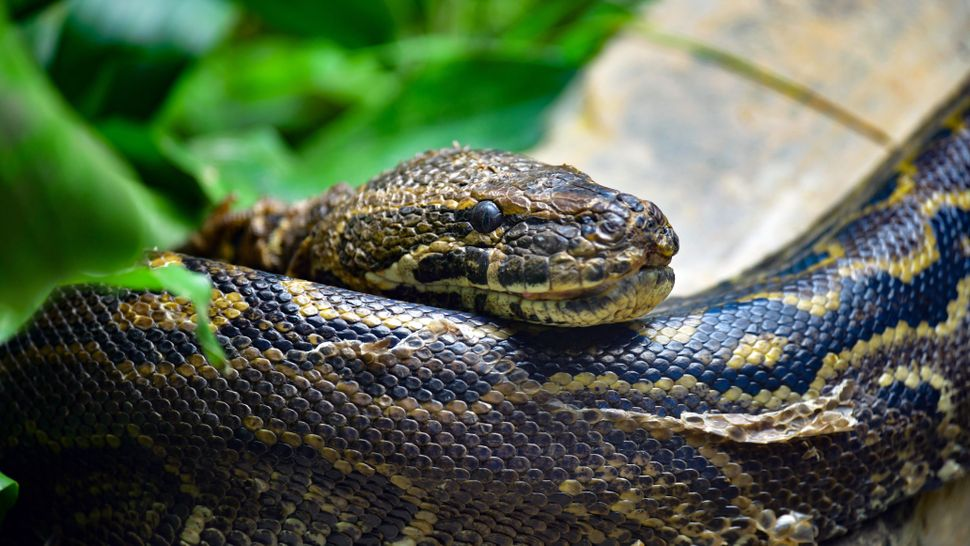
The Central African rock python (Python sebae) is Africa’s largest snake, according to Oregon Zoo. It’s highly adaptable and found throughout sub-Saharan Africa, where it is equally at home in savannah, forest and desert habitats. These pythons average around 9.8 to 16.5 feet (3 to 5 m) long, according to Animal Diversity Web (ADW).
2. King cobra (18.7 feet)
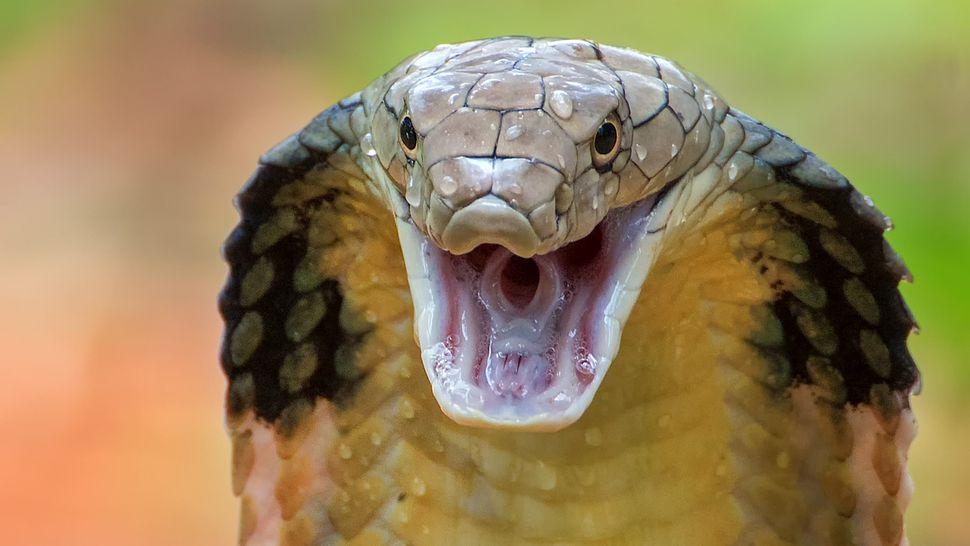
Rearing up to display its flared hood and venomous fangs, the king cobra (Ophiophagus hannah) cuts a threatening figure — and not just because its bite is powerful enough to kill an elephant. Native to Asia, king cobras can grow over 16 feet (5 meters) long, according to the Smithsonian’s National Zoo and Conservation Biology Institute The longest king cobra ever recorded was a captive snake that reached 18.7 feet (5.71 m) at London Zoo in the late 1930s, according to Guinness World Records — roughly the length of a shipping container. It was killed at the outbreak of World War II to prevent it from escaping into the city if the zoo was bombed.
3. Burmese python (18.8 feet)

Burmese pythons (Python bivittatus) are one of 41 python species worldwide. Burmese pythons are native to Southeast Asia and start life in trees, but by adulthood their size forces them down to the ground. The largest recorded Burmese python was a captive snake named Baby, which measured 18.8 feet (5.74 m) long, according to Guinness World records. In the wild, these snakes regularly stretch to over 16 feet (4.9 m) long — large enough to hunt alligators.
4.Cuban boa (up to 19.6 feet)
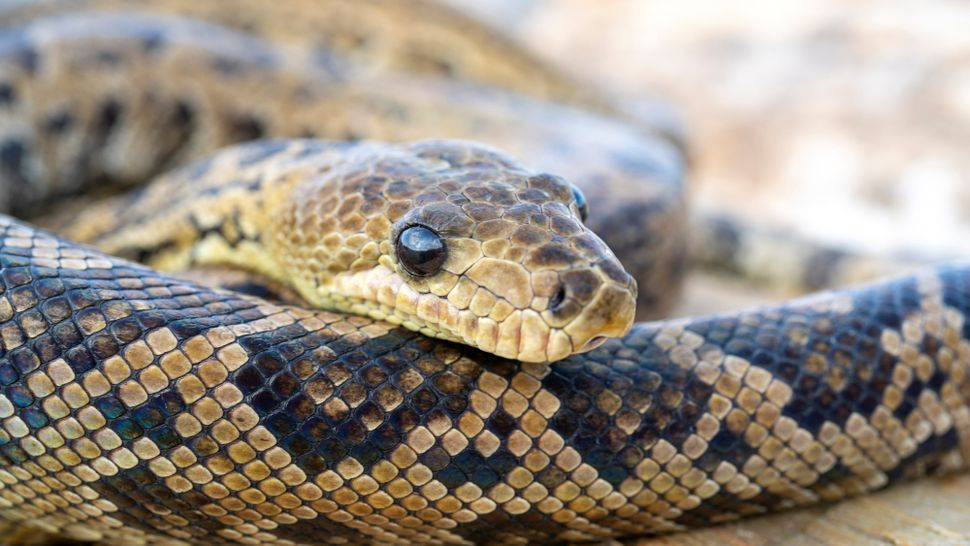
These iridescently scaled boas, endemic to Cuba, are the largest snakes in the Caribbean, according to the Lake District Wildlife Park. Weighing over 66 pounds (30 kilograms) and reaching up to 18.5 feet (5.65 m) long, according to researchers publishing in the journal Reptiles & Amphibians — some reports claim they can grow to more than 19.6 feet (6 m) — Cuban boas (Chilabothrus angulifer) spend much of their time coiled around tree branches or scouting for lizards and rodents on the ground.
5.Indian python (up to 21 feet)
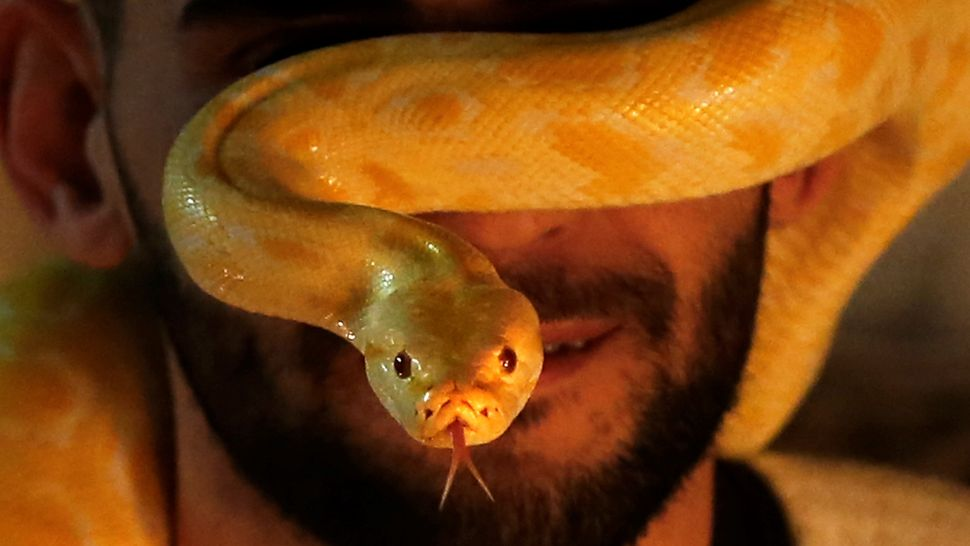
Possibly the species that inspired Kaa, the enigmatic talking snake from Rudyard Kipling’s “The Jungle Book,” the Indian python’s (Python molurus) gargantuan size in story books is only a partial exaggeration: These snakes can grow to 20.9 feet (6.4 m) long and weigh almost 220 pounds (100 kg), according to ADW. That’s about the weight of a newborn elephant calf.
6. Reticulated python (32.8 feet)
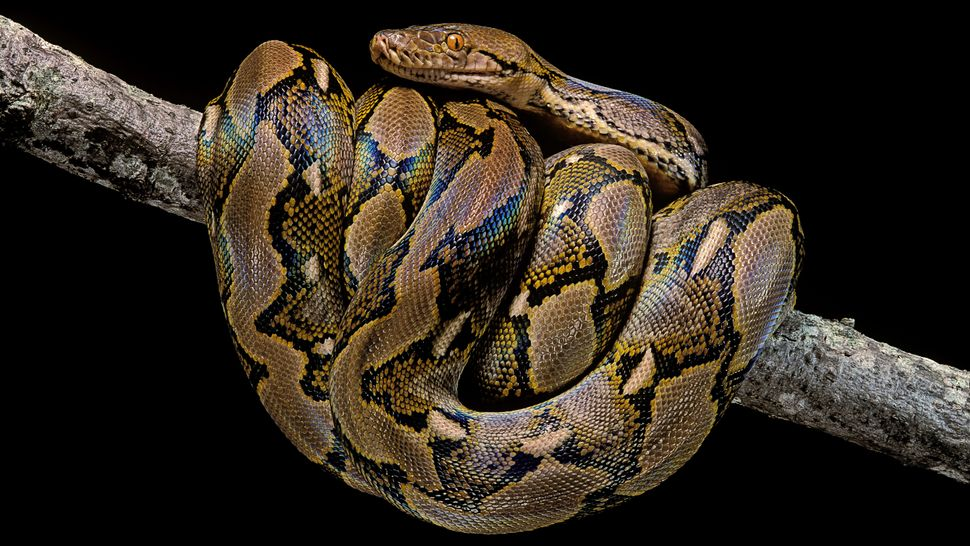
Another South Asian native, the reticulated python (Malayopython reticulatus) — decorated with a pattern of repeating diamond shapes that give it its name — is widely recognized as the longest snake on Earth today. One account from 1912 claims that a captured python measured 32.8 feet (10 m) long — the length of a typical school bus — though this figure is difficult to verify.
7. Green anaconda (up to 33 feet)
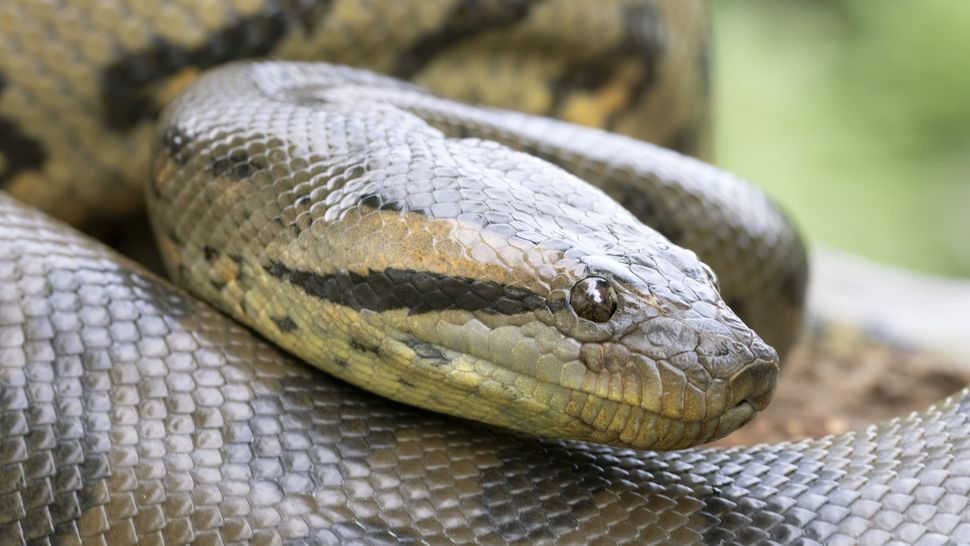
Green anacondas (Eunectes murinus) silently slither through marshlands and streams in the Amazon, where they may live long enough to reach 30 feet (9 m) long.
8. Gigantophis garstini (up to 32 feet)
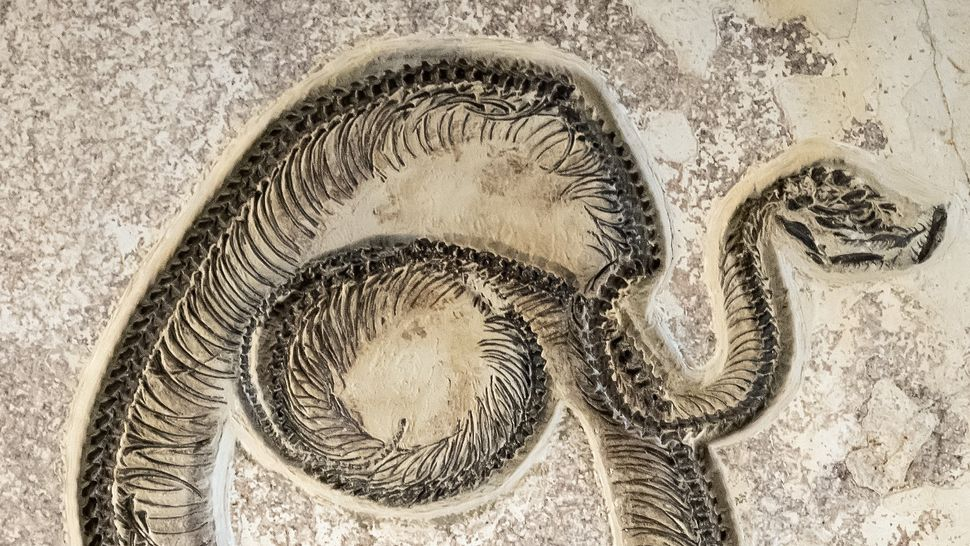
While modern-day snakes can reach incredible sizes,: prehistoric snakes beat most of these present-day records. Gigantophis garstini, for example, was a hefty beast that slithered around about 40 million years ago on a body that researchers estimate was anywhere between 23 and 32 feet (7 – 10 m) long, according to a PLOS blog post.
9. Palaeophis colossaeus (39 feet)

Giant snakes weren’t confined to land: Earth’s prehistoric seas also contained leviathans, such as Palaeophis colossaeus. This sea serpent traversed an ancient ocean that once lay over parts of North Africa 100 million years ago. When its fossilized skeleton was discovered in the present-day Sahara desert, researchers calculated from samples subsequently collected during field trips in 1999 and 2003 that this species would have reached over 39 feet (12 m) long, according to research published in the journal Acta Palaeontologica Polonica. That makes it the lengthiest sea snake ever found — and one of the longest known snakes, period.
10. Titanoboa cerrejonensis (42.7 feet)
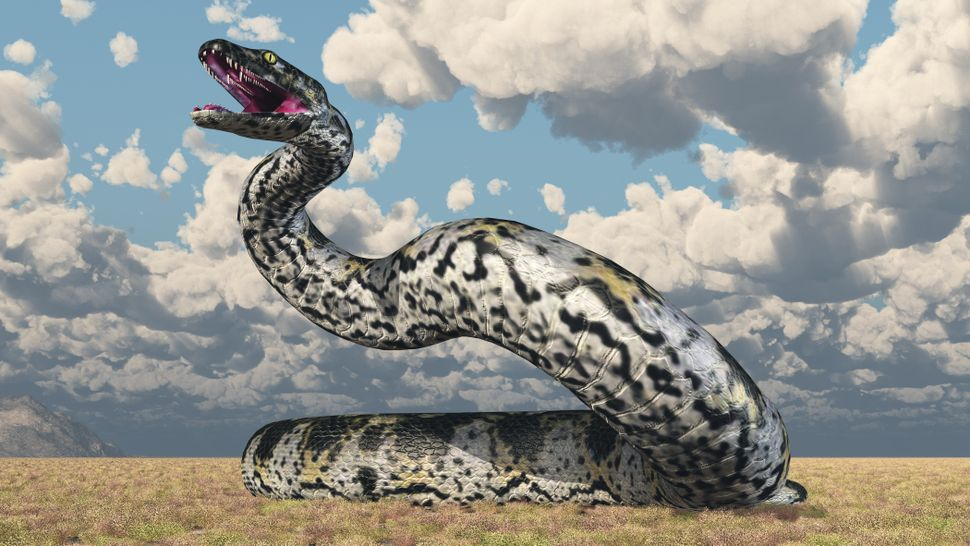
A snake the size of a T. rex that weighs 1.25 tons (1.13 metric tons) Titanoboa cerrejonensis isn’t a fictional monster cooked up for a horror film but a real creature that once slithered through the humid forests and rivers of South America. Titanoboa was one of the biggest known snake to have ever existed.
Dating back 60 million years, this snake was the prehistoric grandfather of the region’s modern-day anacondas and boas. Its roughly 250 vertebrae formed a massive 42.7-foot-long (13 m) frame that it would have nourished with a diet of crocodiles and river fish. It is estimated to have weighed a whopping 2,500 pounds (1,130 kg), according to Indiana University.
11. Vasuki Indicus (up to 50 feet)
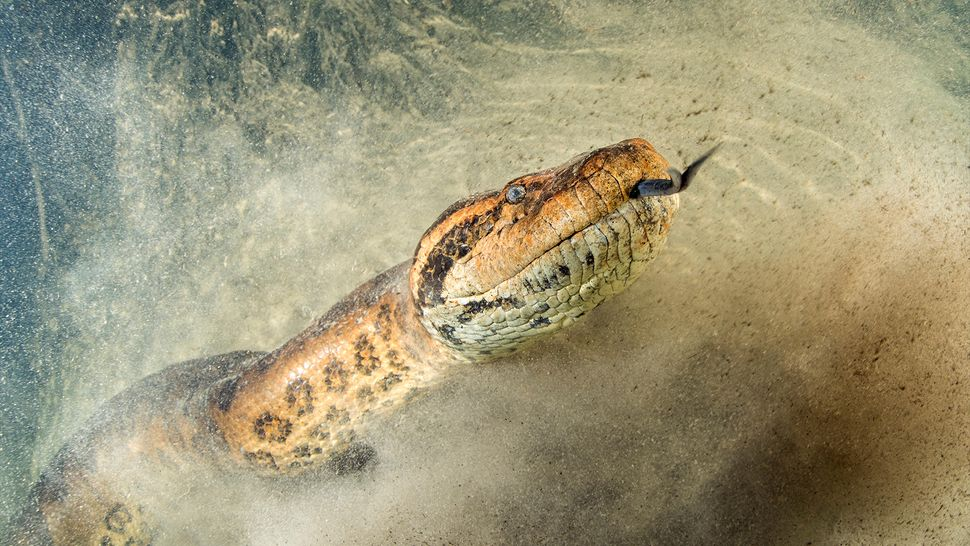
While Titanoboa held the record as the biggest known snake for over a decade, a new contender was announced in April 2024. Unearthed from a mine in India, Vasuki indicus — at its upper estimate — would have been 6.5 feet (2 meters) longer than Titanoboa. This giant, extinct snake is named after Vasuki, the mythical king of serpents in Hinduism. Its fossilized vertebrae indicate it was a fully grown adult and that it was likely between 36 feet and 50 feet (11 and 15 m) long. This potentially makes V. indicus the largest known snake to ever live.



